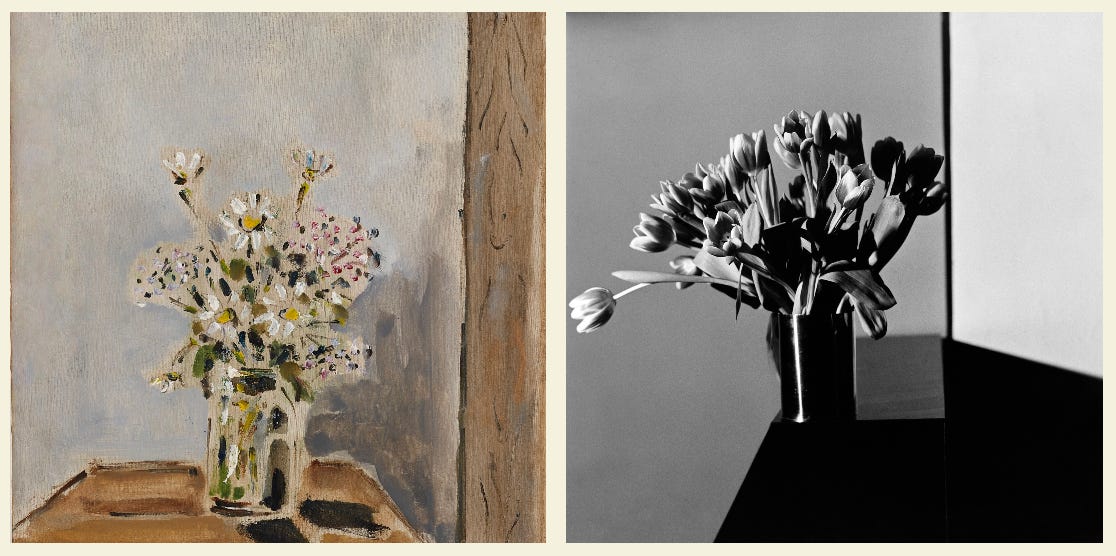One Thing’s signature link dump / curatorial effort / exercise in connoisseurship. Aggregation as a valuable service. Only the best stuff that sticks in our minds. KC = Kyle Chayka, NG = Nate Gallant.
Footwear watch: Birkenstock is making “Kyoto” sandals. I guess they look monkish or something? — KC
Fashion fire sale: For those who would like to pick some luxury nonsense off the flailing zombie corpse of The Real Real, the site is currently having a very big sale. There have been plenty of articles from fashion and business journalists about their suspect authentication process and the sketchy business model of buying things off consignors before actually consigning them, so take advantage of the firesales while they last. — NG
Etsy shop recs for a seasonal wardrobe: In a similar vein, for anyone looking to spruce up their fall closet who wants to buy from a vaguely more individual collector, there are a few new Etsy shops I can recommend with both designer and other vintage staples at very discounted prices. AliaVintage has a wide selection of Japanese designer vintage-wear, especially for masc styles, along with some fun Americana. HommeEtVintage is my favorite tie emporium at the moment, although they have some classic pieces of casual suiting that are worth checking out. EmmaThriftStore is another great big store, and please, someone buy this ridiculous windbreaker. I can’t pull it off but it will look amazing on someone out there much cooler than me. — NG
Auto-criticism: What happens when a writer makes a beloved author’s work more about themselves than the author? The Drift has the vanguard literary essay of the month, taking on the nonfiction book genre of overly memoiristic critical readings. — KC
RIP the monoculture: Slate observes that HBO has lost its grip on Sunday-night viewing, the anxiety-soothing viewing slot of prestige TV. (Though HOTD and Industry work just fine for me.) — KC
Restaurant criticism discourse: Pete Wells, the NYT’s restaurant critic for the past 12 years, is stepping down from his post, citing a desire to eat food for normal reasons and not slowly destroy his body. Wells is one of the great critics of our moment; each review he wrote felt like part of a longer-term cultural investigation, assembling an idea of what dining out could and should be. What Wells doesn’t like is the overly flashy, monetized, and extractive. One of his final reviews is of Coqodaq, the aspirationally luxe Korean fried chicken lounge that seems a bit like if an Instagram meme account made a restaurant. Wells also wrote an essay summarizing his thoughts on how restaurants have changed in the past decade+, largely for the worse. — KC
People who consume a steady diet of bucket lists and viral videos rush from one restaurant to another so they post about it, to prove they were there. They go to places solely so they can put a photo of the viral egg sandwich or rainbow bagel on Instagram. Whether the sandwich or bagel tastes good is irrelevant; the point is to prove they were there.
BCH files, cont’d: For those who liked our Byung-Chul Han newsletter and Kyle’s coverage of the internet’s favorite philosopher, my review of his three recently published books on Buddhism and Asian religion went up on Tricycle last week. Check it out for more thoughts on the difficult terms Han uses to address intersecting political and spiritual crises. — NG
One of the more salient aspects of Han’s work is a lack of nostalgia for past philosophical worlds, modern or ancient. He does, however, find recourse in the philosophical and spiritual archive that might help us stem the tide of senseless positivity. His work explores many possible moments of resistance but centers largely on probing for a certain kind of “no.”
European countryside real estate: You wouldn’t regret buying this townhouse in downtown Eygalières for €690,000. Staying in a villa just outside of the idyllic Provence village, I walked past this house a dozen times. Only a few blocks from the butcher, the Italian provisions store, and a handful of perfect restaurants and bars. — KC
New ambient television: The new, fourth season of Emily in Paris is now available on Netflix. Don’t remember what happened last season? It doesn’t matter. It promises to be another mindless few hours of chill vibes, bingeable in one day. (Though this time the season is split up into two drops to prolong the attention, quelle horror.) To put the show in its proper historical context, read this insightful NYmag interview with creator Darren Starr. — KC
Overtourism: I loved this short essay by an Italian journalist in Bologna, bemoaning the fate of her city as its tourist volume increases. (Vibe check: several of my friends have gone there in the last year.) Unique, novel places attract tourists; an excess of tourists accelerated by the internet era slowly erases what’s unique and appealing about a place. There’s an air of unsustainability to all of our summer travel. (Plus, the same trends are everywhere: a Spanish journalist told me that Bologna’s mortadella is newly trendy in Madrid.) — KC
As summers get hotter, flying from one part of an overheated planet to another to consume vast amounts of meat feels like nothing so much as a last gasp. The people who throng Bologna’s old streets seem to stubbornly insist that yes, we can still have all of these things, when all signs are telling us we cannot.
Curatorial juxtaposition: If you find yourself in or around southern New Hampshire in the next few weeks, I would highly recommend the Currier Museum in Manchester. On display at the moment are some impressive 20th century classics of European art, as well as a series of well-curated unexpected art pairings. One features conversation between pieces from the permanent collection depicting South America largely in the oil paintings of colonists, with art made in response by Daniel Otero Torres. Torres’ sculptural works are fascinating in and of themselves, but make insightful environmentalist interlocutors with the surrounding “classics.” Just as provocative, although in a much different vein, are the surprising intersections of artistic study between photographer Robert Mapplethorpe and Italian painter and sketch artist Filippo de Pisis. Despite them never having met, the resemblances of visual vocabulary need to be seen to be believed, and are well with the visit. — NG
Culinary globalization: Chicken katsu, the familiar dish of a fried cutlet chicken with curry sauce over rice, is a Japanese recipe inspired by the UK’s interpretation of an Indian original. This great essay in Vittles (not paywalled) takes on “the ongoing katsuification of the UK,” which sees everything from burgers to chips (crisps) to baby food adopting katsu flavor. — KC
Curry was first introduced to Japan by the British navy in the early Meiji period, at a time when the imperial Japanese government was keen to get the nation eating more meat in order to counteract nutritional deficiencies. Spices in curry helped mask the unfamiliar stink of beef, pork, and mutton, while also carrying a certain cosmopolitan appeal and the aura of imperial power. Early Japanese curries were inspired by London-based Crosse & Blackwell’s curry powder, and informed by British Victorian recipes (which included ingredients like apples, bananas, dripping, honey, and a characteristic flour-based roux to thicken the sauce like a gravy). The oldest known Japanese recipe for curry appeared in a book called 西洋料理通正 (Guide to Western Cookery), which was published in 1872. It contains only meat, leeks, butter, flour, water, curry powder, and salt.
A slim volume of poetry: Pre-order award-winning poet and former podcaster Danez Smith’s new poetry collection, Bluff. Every one of their works has hit very hard and taught me something about America, poetry, and American poetry.From the excerpts I’ve seen thus far, this will be no exception. — NG
Reality TV as video game: Friend of One Thing (FOOT) Nicole He’s video game Crush House, which is inspired by Terrace House, just came out. In it, you play as the cameraman of a reality show driven to film the contestants in exactly the ways the audiences want. Aptly dystopian, but also deeply satirical. — KC





Can you guys write something about the trend of men and boys wearing white pearls?